These updated, super-fast, and easy Brioche Rolls are the perfect complement to any special dinner and never more so than during the holidays. When I say super easy, I mean super easy. Just a quick turn in a food processor and the dough is are ready to rise.
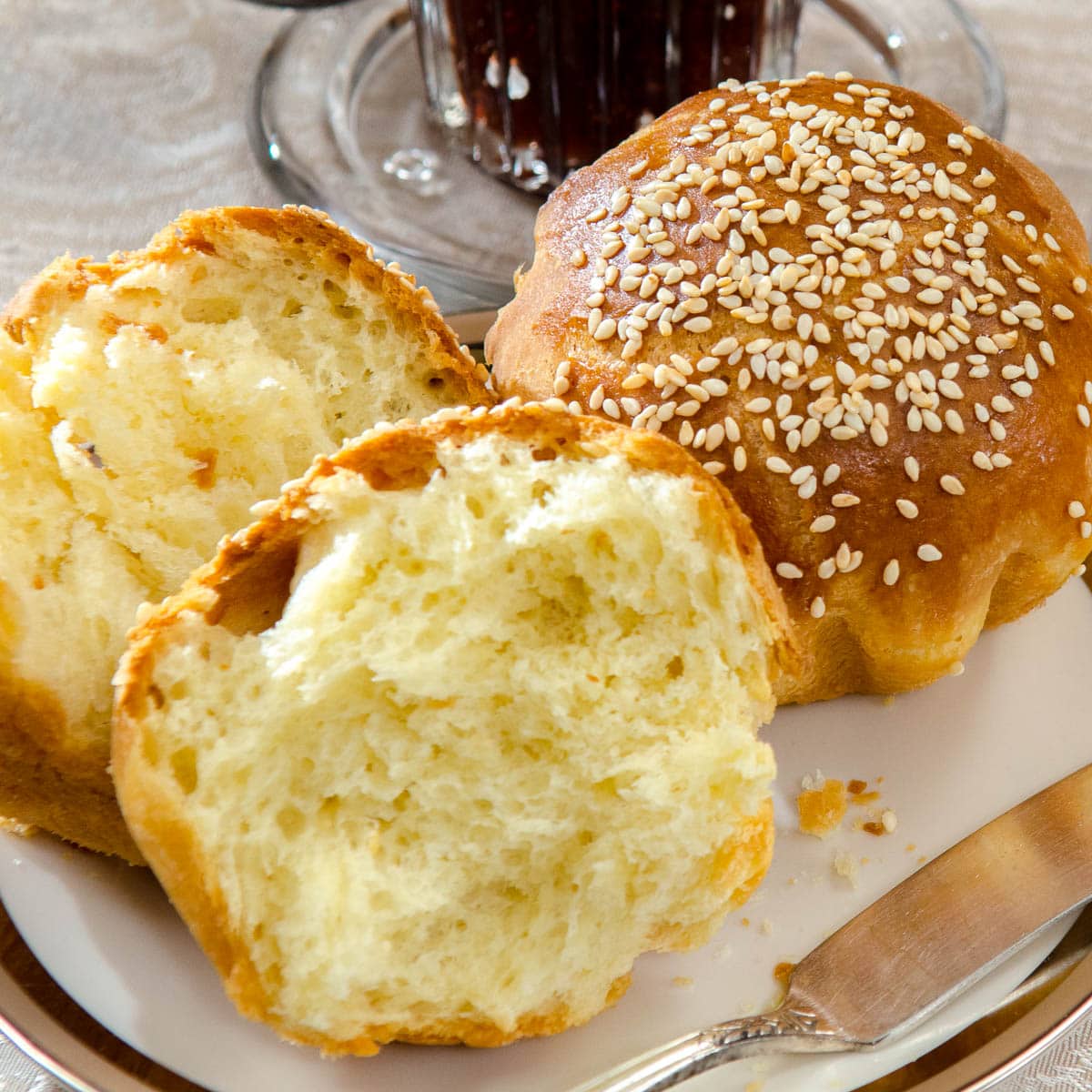
The dough can be made up to 3 days ahead before shaping. The baked rolls can be frozen for several months well wrapped.
Brioche is a base recipe that can be used in many different ways, both sweet and savory. It is an enriched bread meaning it is made with eggs, butter, and cream. I have used it for the Raspberry Mascarpone Tarte Tropezienne, Glazed Lemon Twists in 60 Second Brioche, Lemon Gooey Butter Cake in a Brioche Crust and Twice Baked Brioche - A Breakfast Treat.
If you're looking for a couple of other fast and easy dinner rolls, check out Outback Steakhouse Bread, and the super easy Pumpkin Dinner Rolls Two Ways.
Ingredients

Photos read left to right.
Back Row: unsalted cubed butter, eggs, bread flour. Middle Row: water, sugar . Front Row: instant yeast, salt, cream, sugar for starter.
Butter - unsalted butter is used. The butter is cut into small pieces and must be kept cold before using.
Eggs - size large are used.
Bread flour is used for its high protein count which allows a higher rise. Because this dough includes a lot of eggs, butter and cream, it is a slow riser. The bread flour assists in the rising.
Instant Yeast is used for a quick start to the sponge.
See recipe card for quantities
Instructions
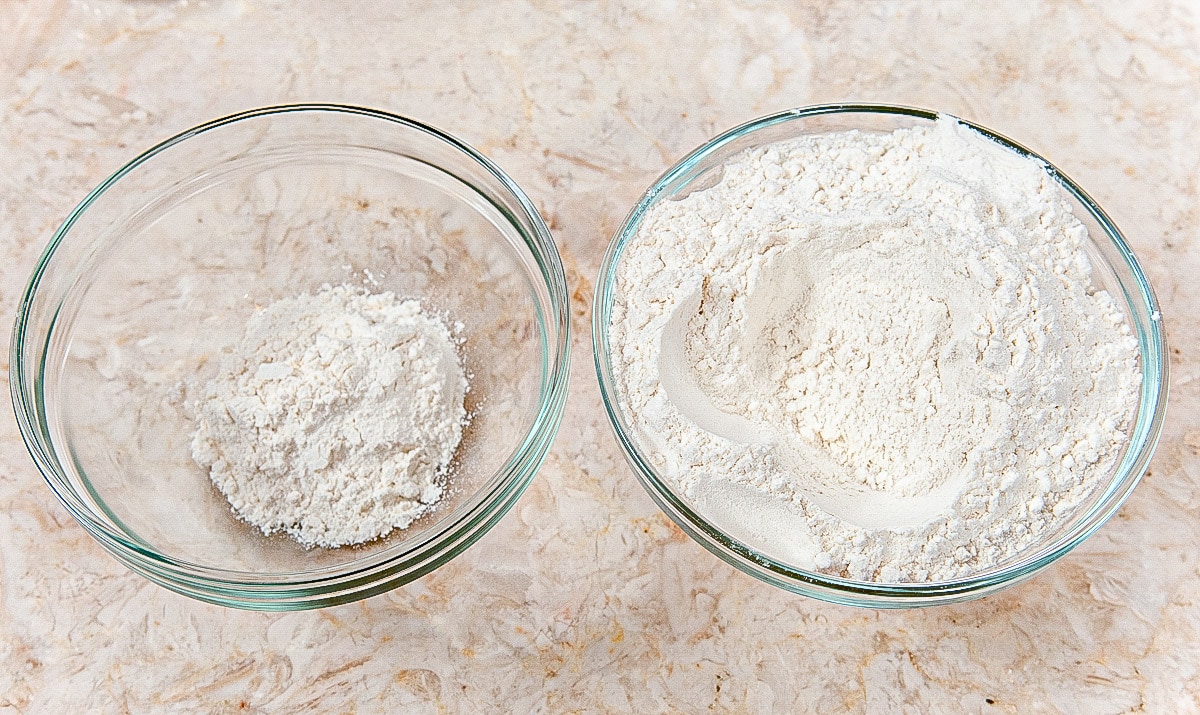
Step 1. Remove 3 tablespoons of bread flour from the measured amount.
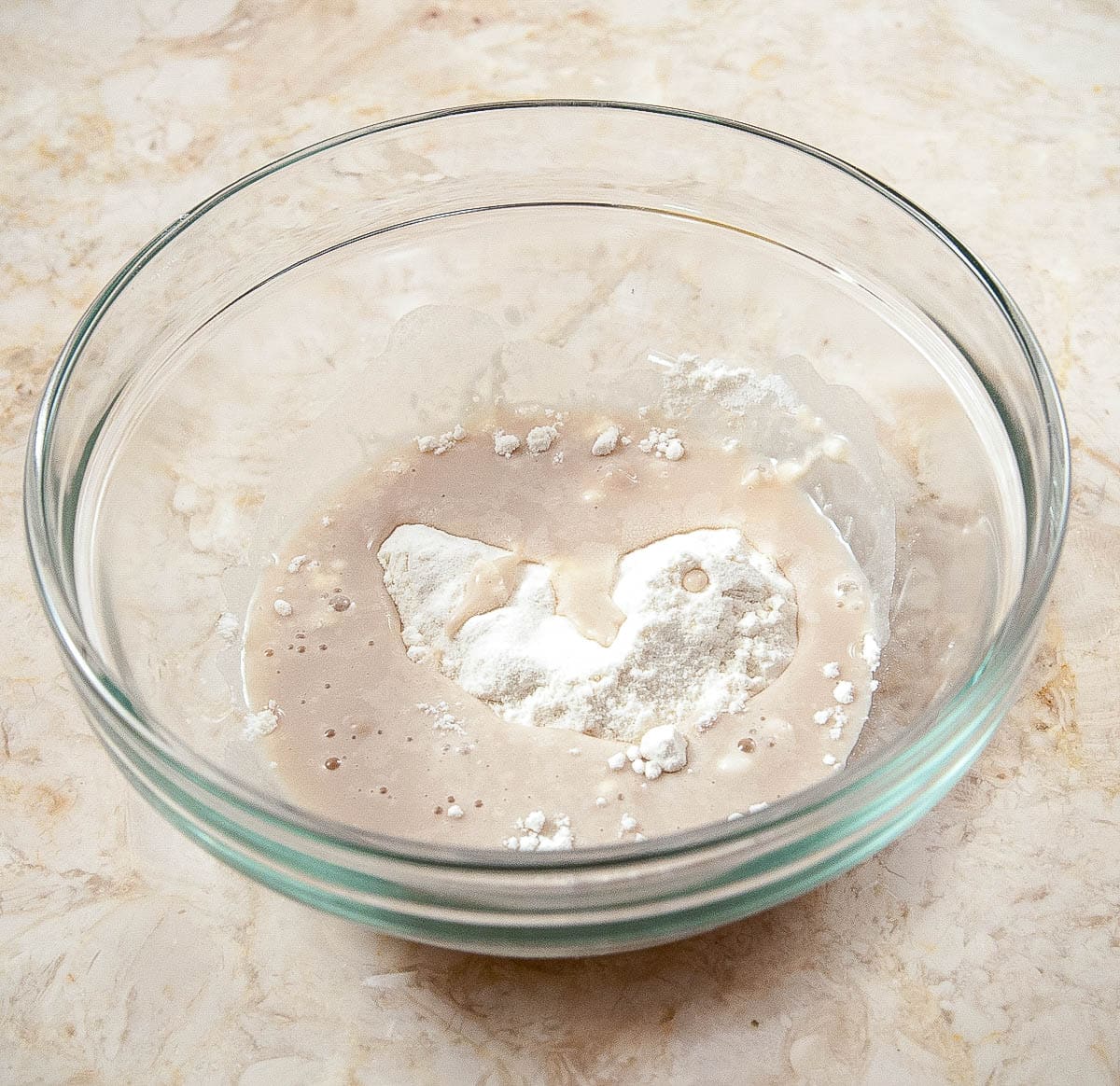
Step 2. Add lukewarm water, yeast and a pinch of sugar to the 2 tablespoons of flour. Stir together until combined.
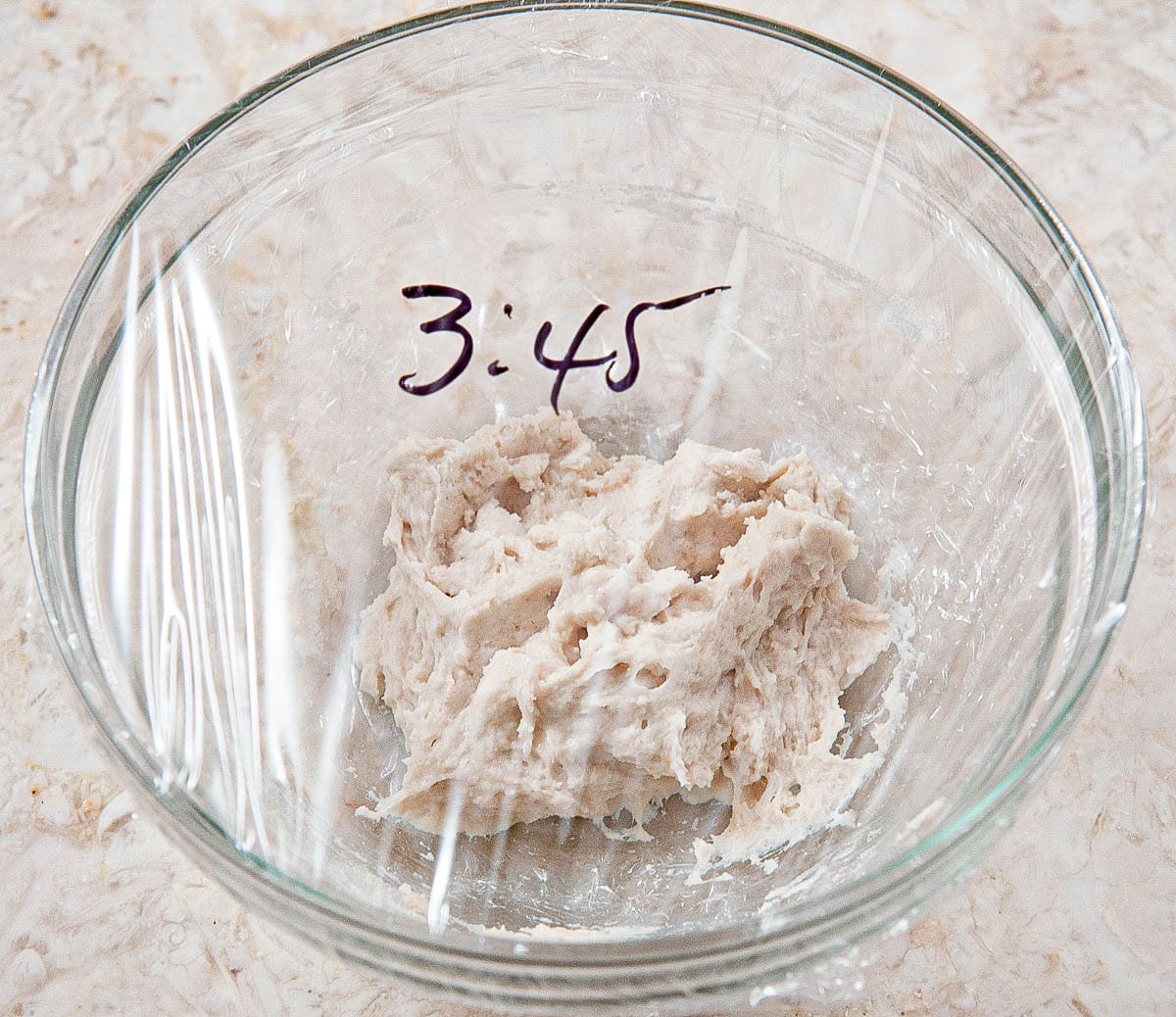
Step 3. Cover the sponge and let it rise until double in bulk - about 20 minutes.
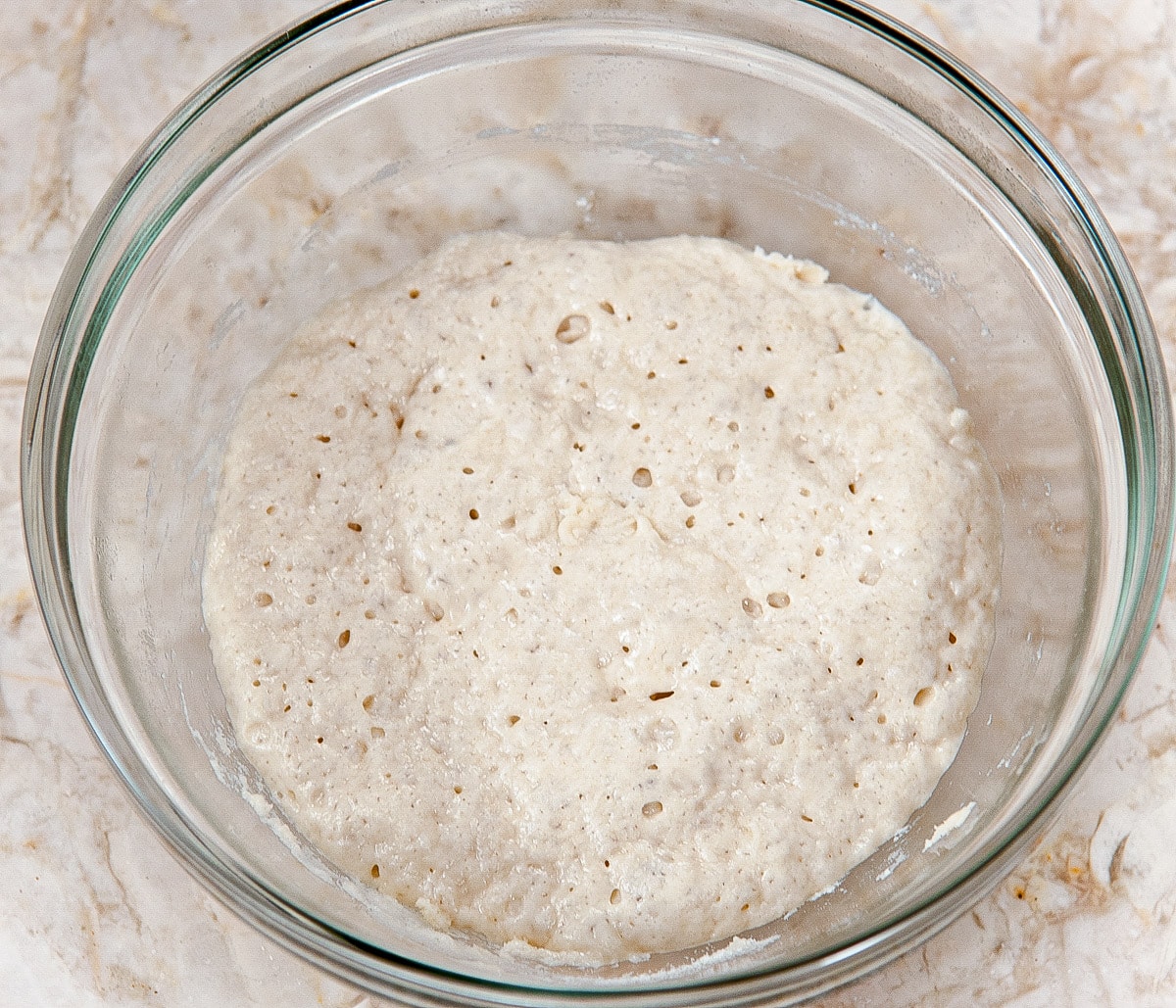
Step 4. The sponge is bubbly and has risen to at least twice its size. It's ready to be used.
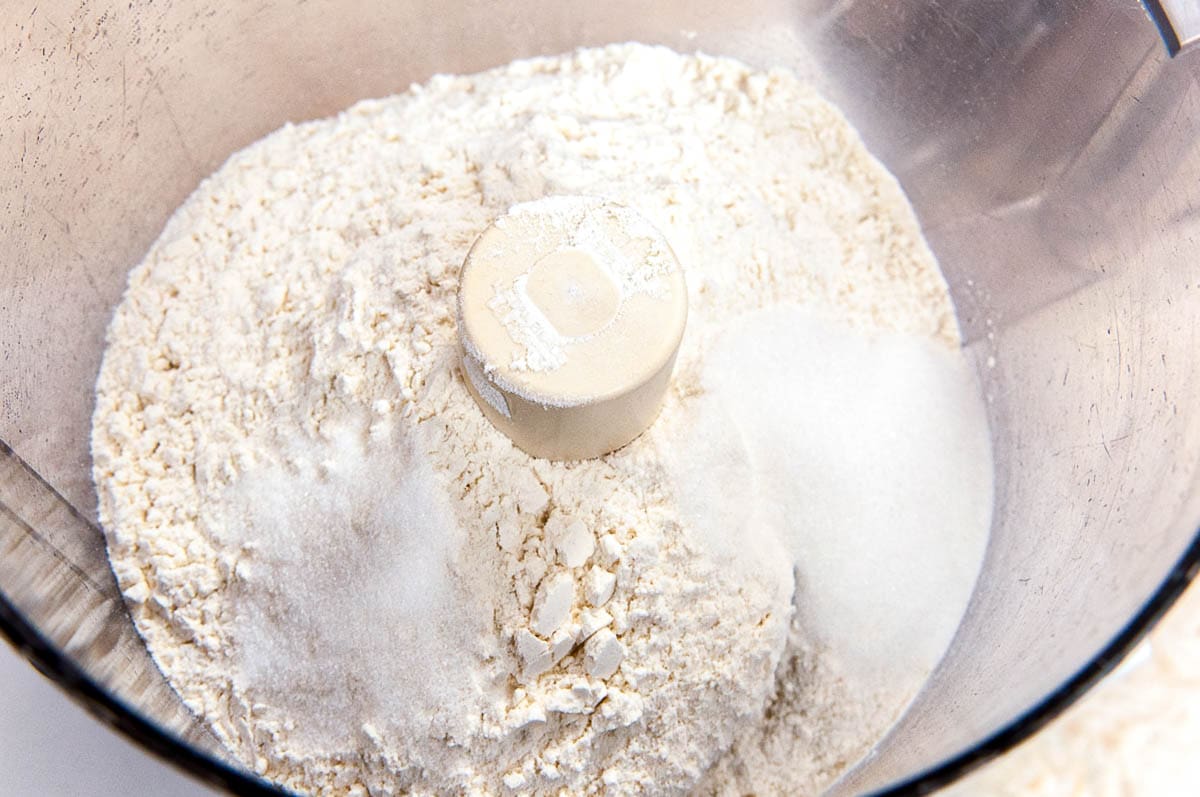
Step 5. Place the remainder of the flour, salt and sugar in the bowl of a food processor. Process for few seconds to mix.
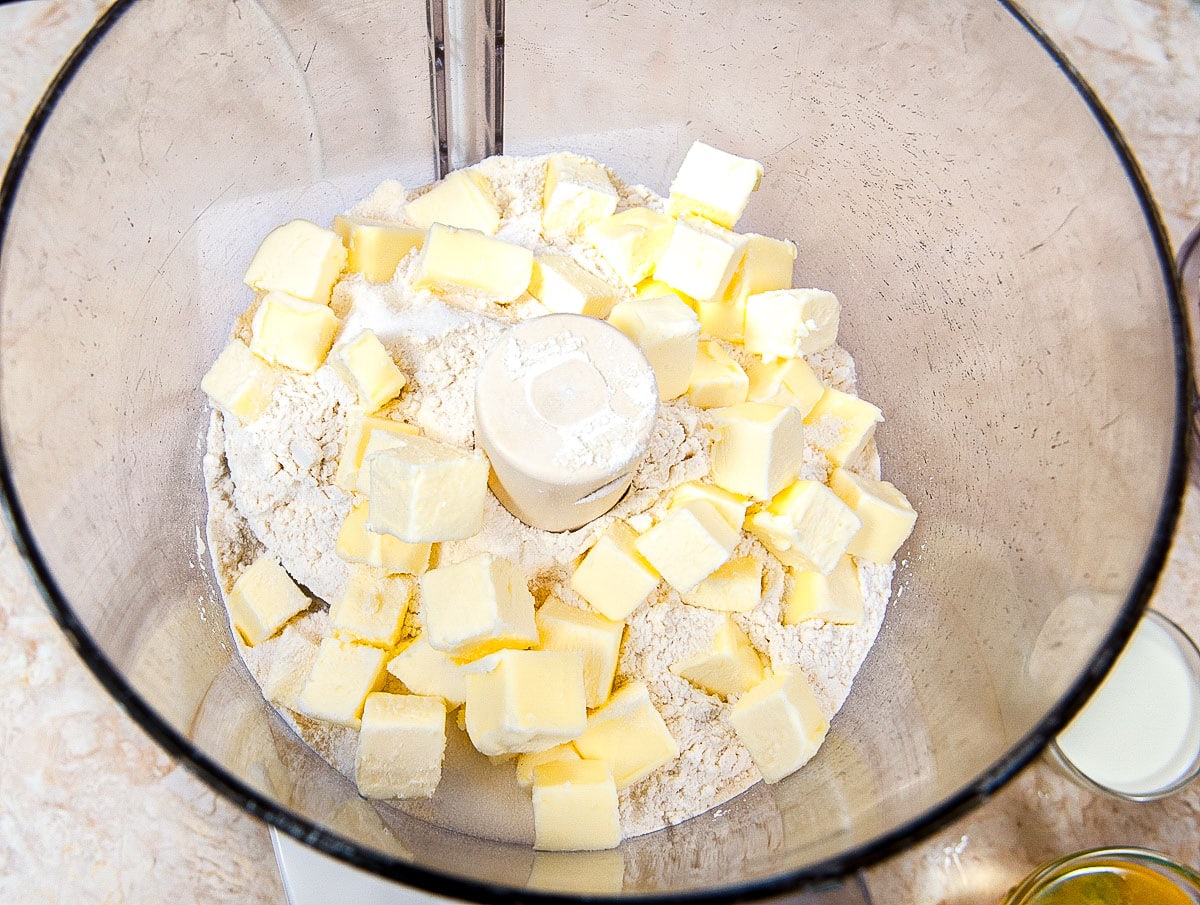
Step 6. Place the cold butter cubes over the flour mixture in the processor.
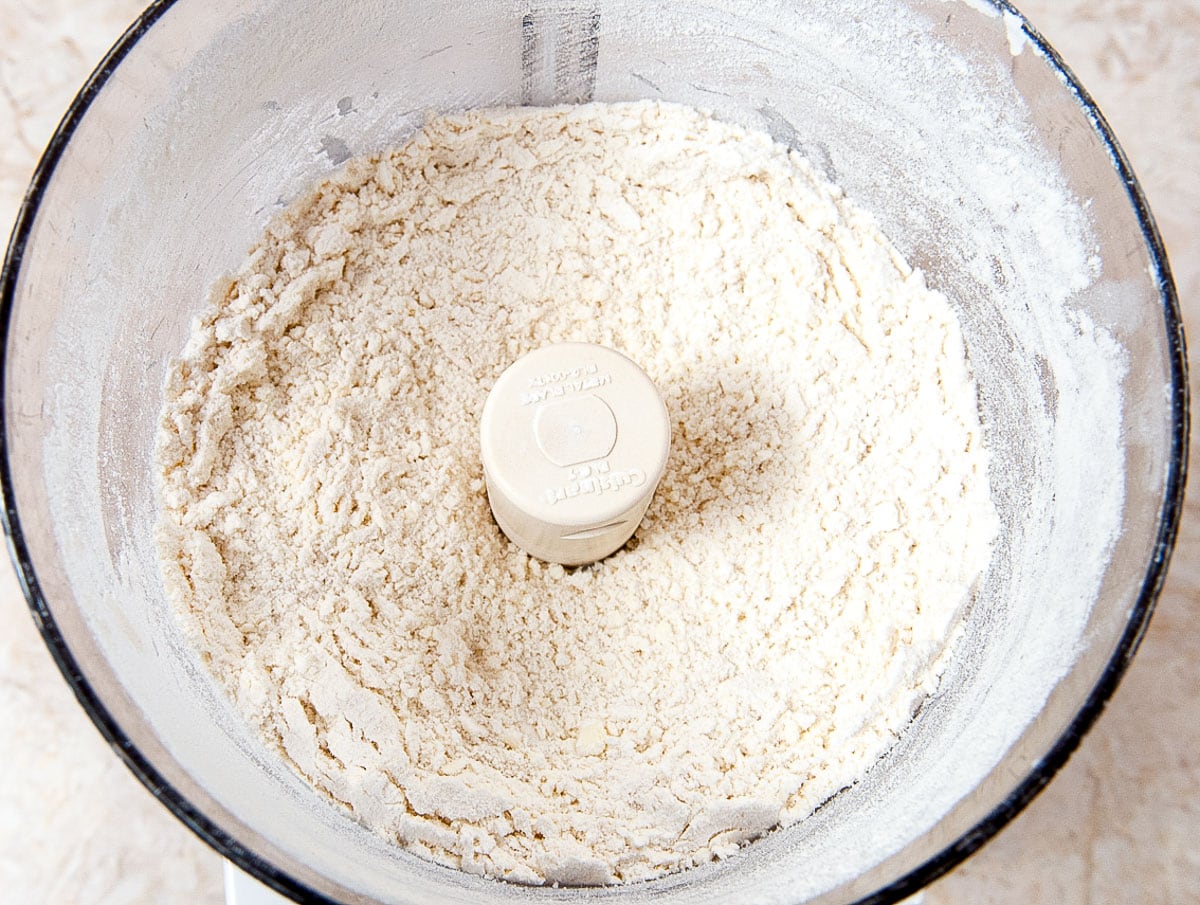
Step 7. Process the butter and flour mixture until the butter is indistinguishable.
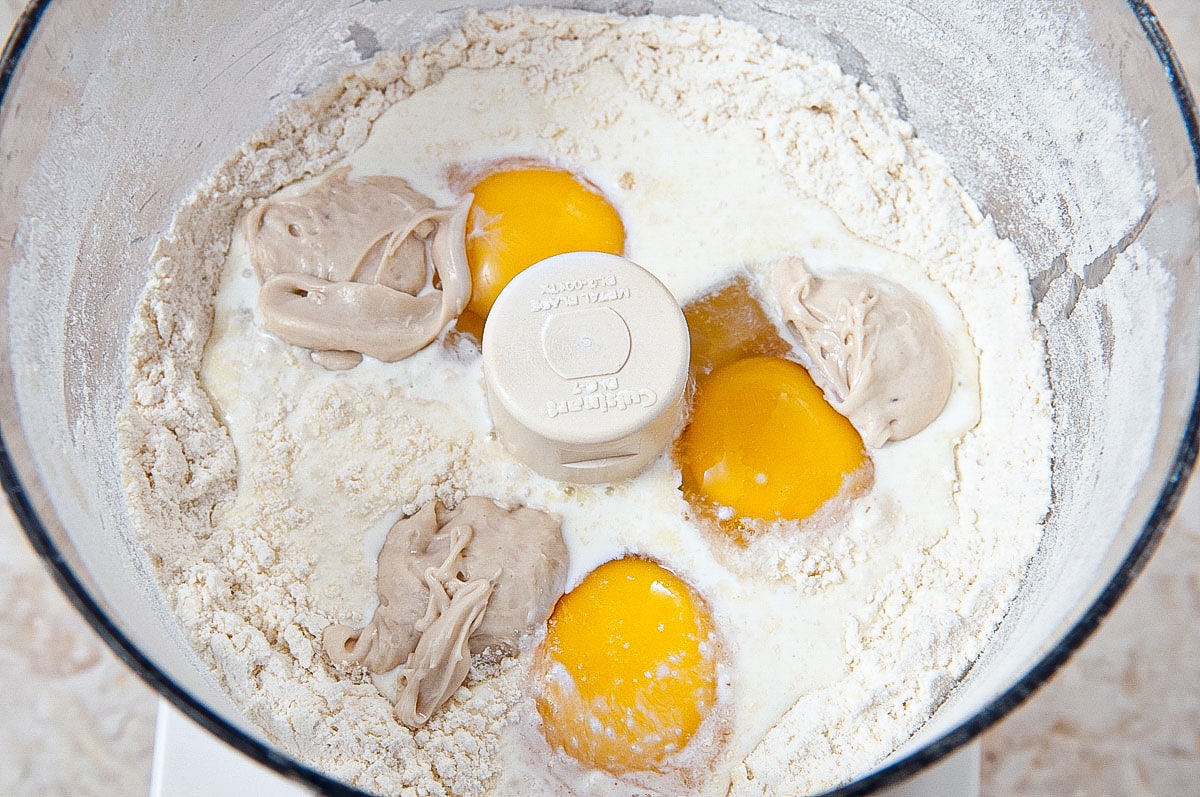
Step 8. Add the eggs, yeast and cream to the processor.
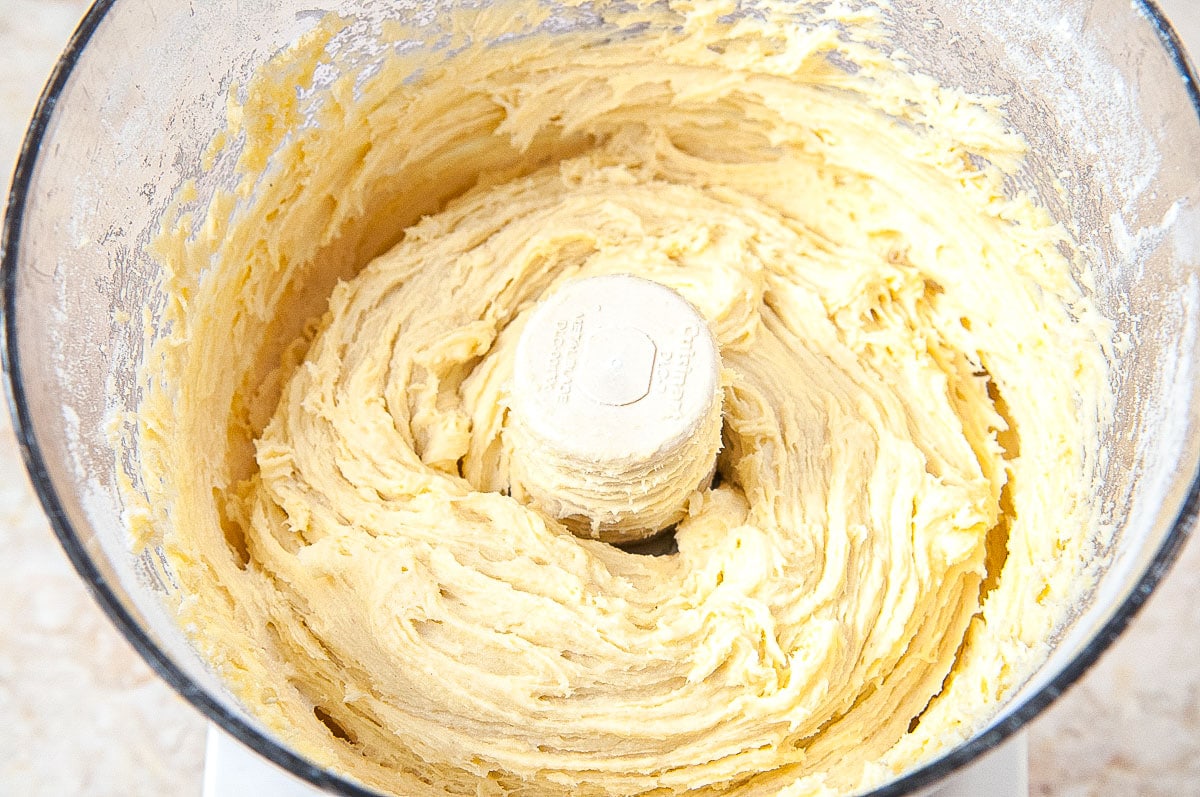
Step 9. The ingredients are processed continuously until a batter is formed - about 25 to 30 seconds. Do not stop the processor until completely mixed.
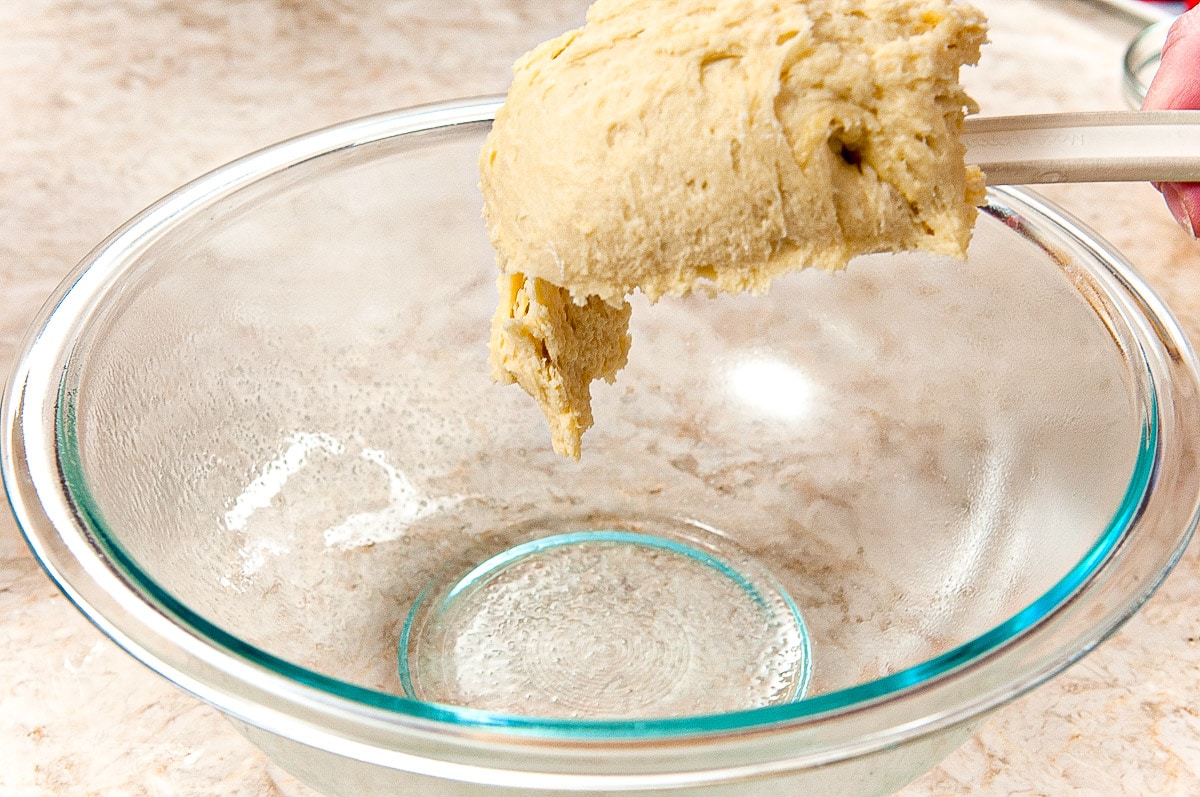
Step 10. Place the batter in a bowl or container sprayed with a non-stick baking release to rise. Place plastic wrap directly on top of the batter. Cover the bowl and mark the time on it. Let it rise until doubled, 2 to 3 hours. Stir down and refrigerate overnight.
An Easy Way to Clean the Processor
The food processor is one of the most useful pieces of baking equipment in a kitchen. As a former consultant to Cuisinarts, I learned a lot of the ins and outs of this machine. Food Processor Tips When Baking is where I share some of them. Below is one of the most useful.
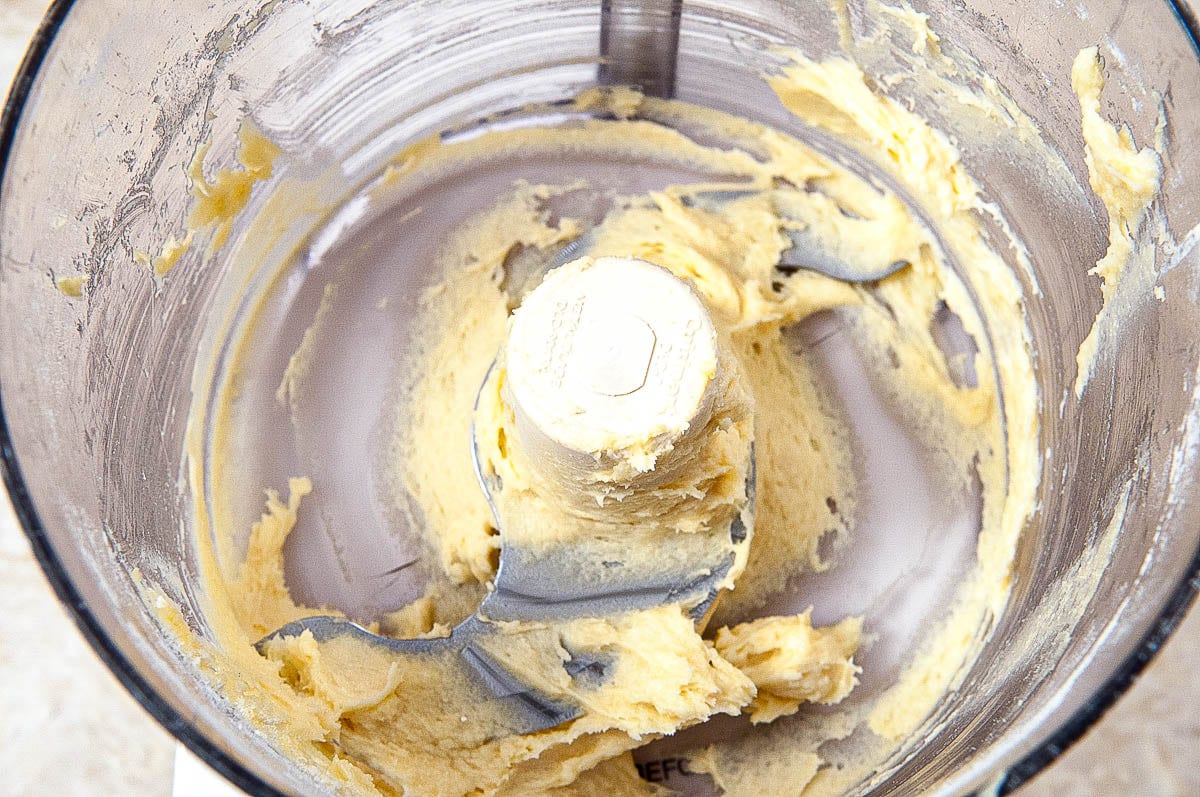
Step 1. Leaving the bowl on the base with the blade, remove as much batter as you can from the processor bowl.
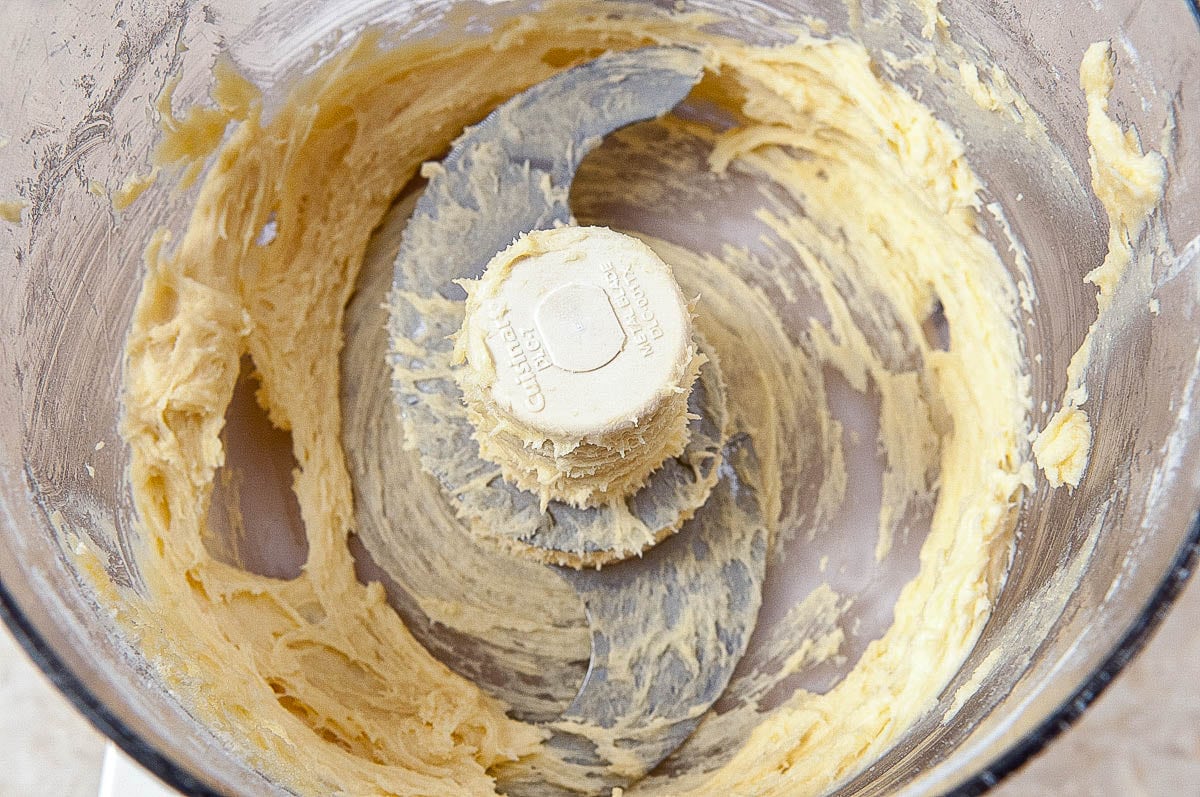
Step 2. Pulse the processor several times and the batter will be flung to the sides of the bowl.
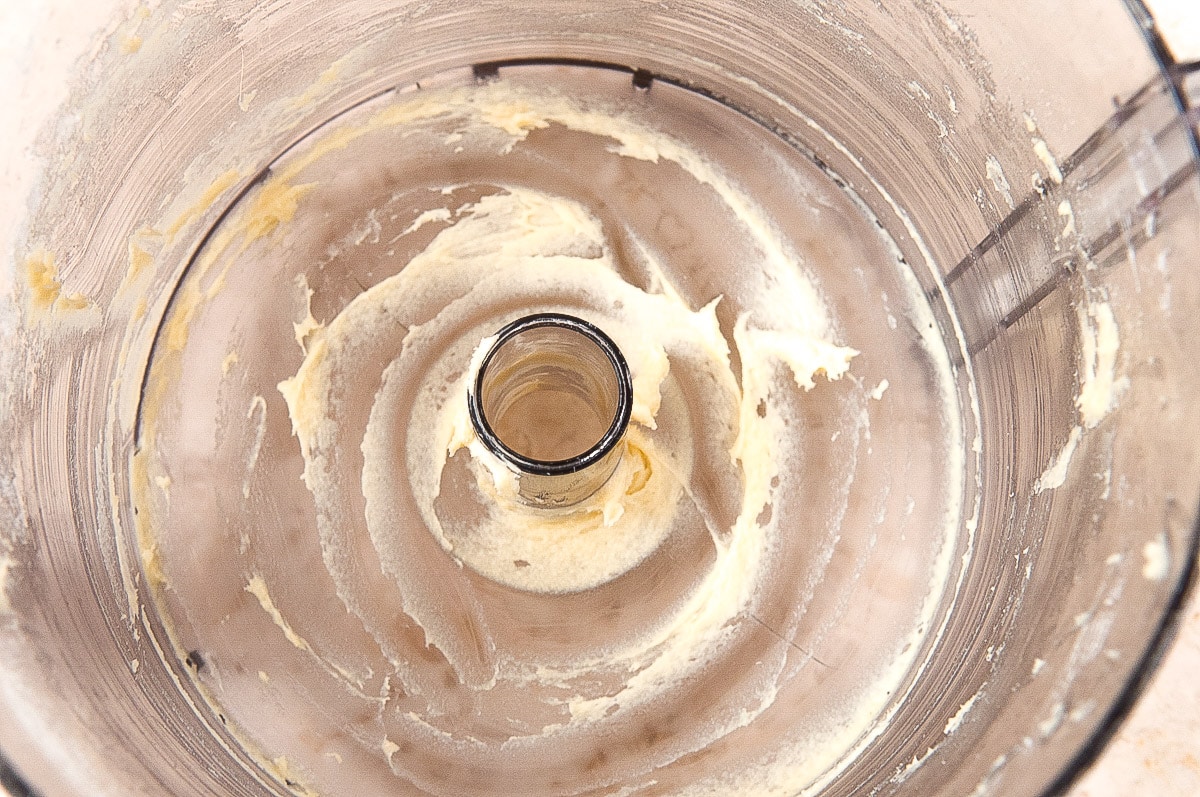
Step 3. Remove the blade and bowl from the processor and scoop out the rest of the batter with a rubber spatula.
Shaping the Brioche Rolls
The dough will be very easy to work. Because it is enriched with eggs, butter and cream, it has no elasticity. It is important to work the dough cold.
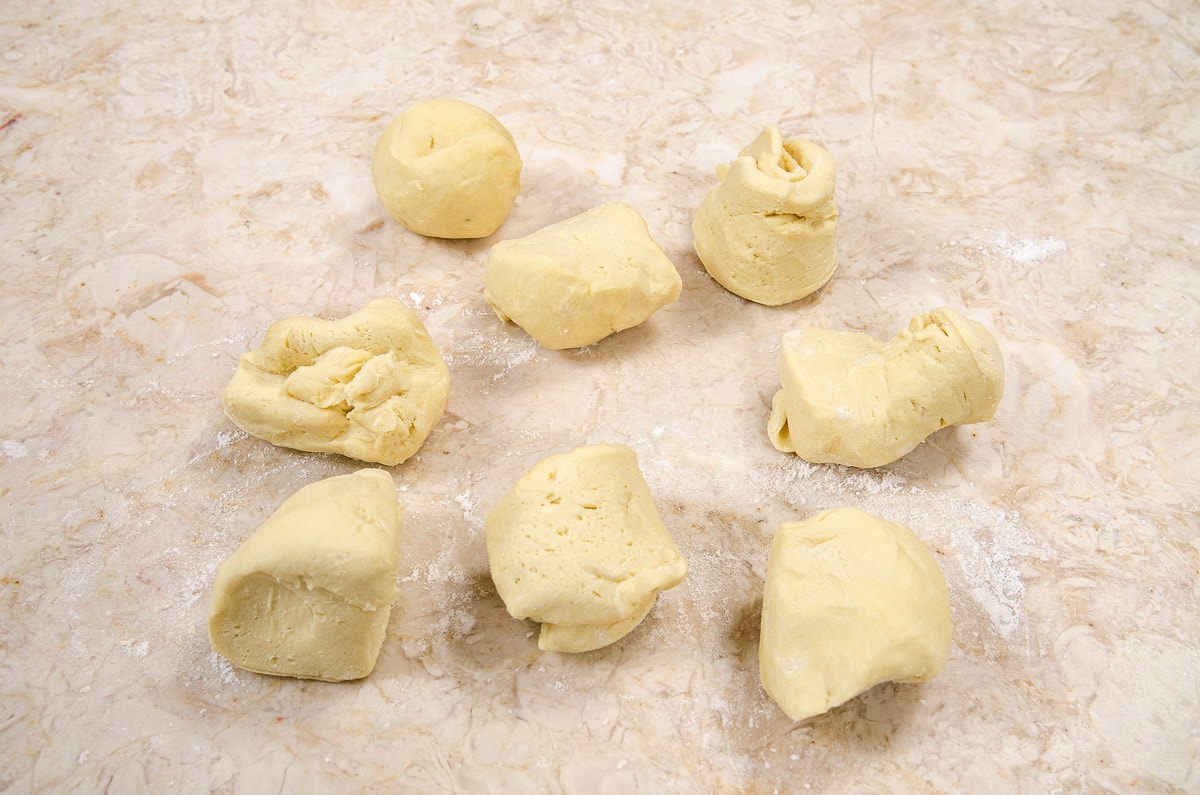
Step 1. Divide the dough into 8 pieces about 85 grams or 3 ounces each.
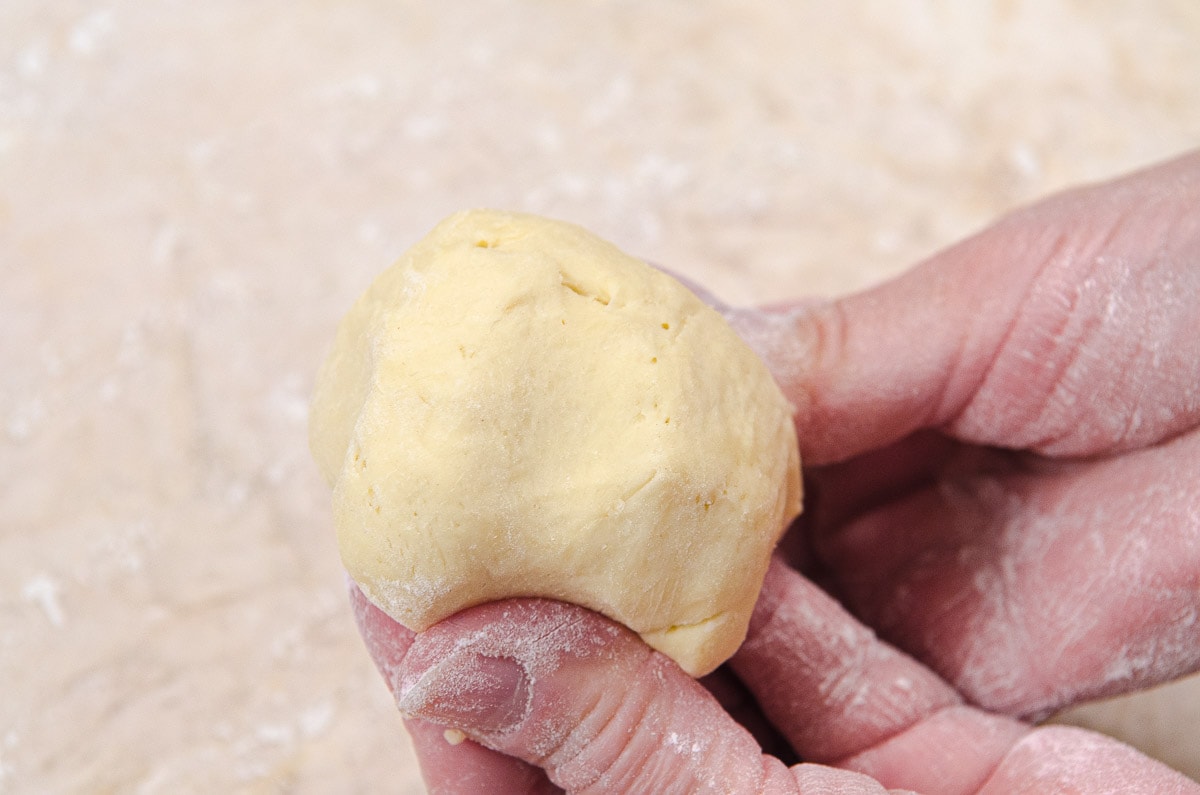
Step 2. Tuck all the sides of the dough underneath to obtain a smooth ball on top.
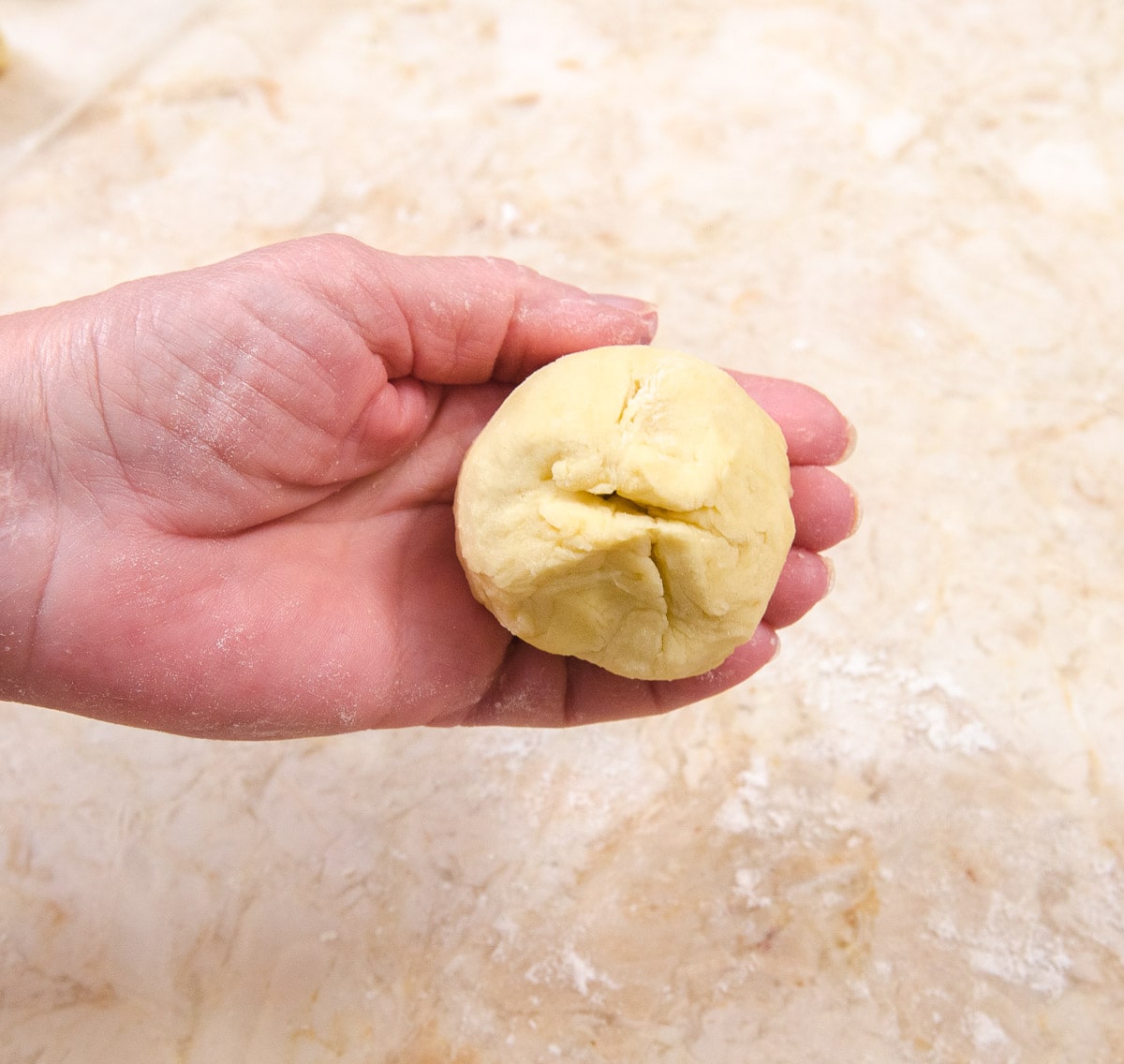
Step 3. Firmly pinch the sides together.
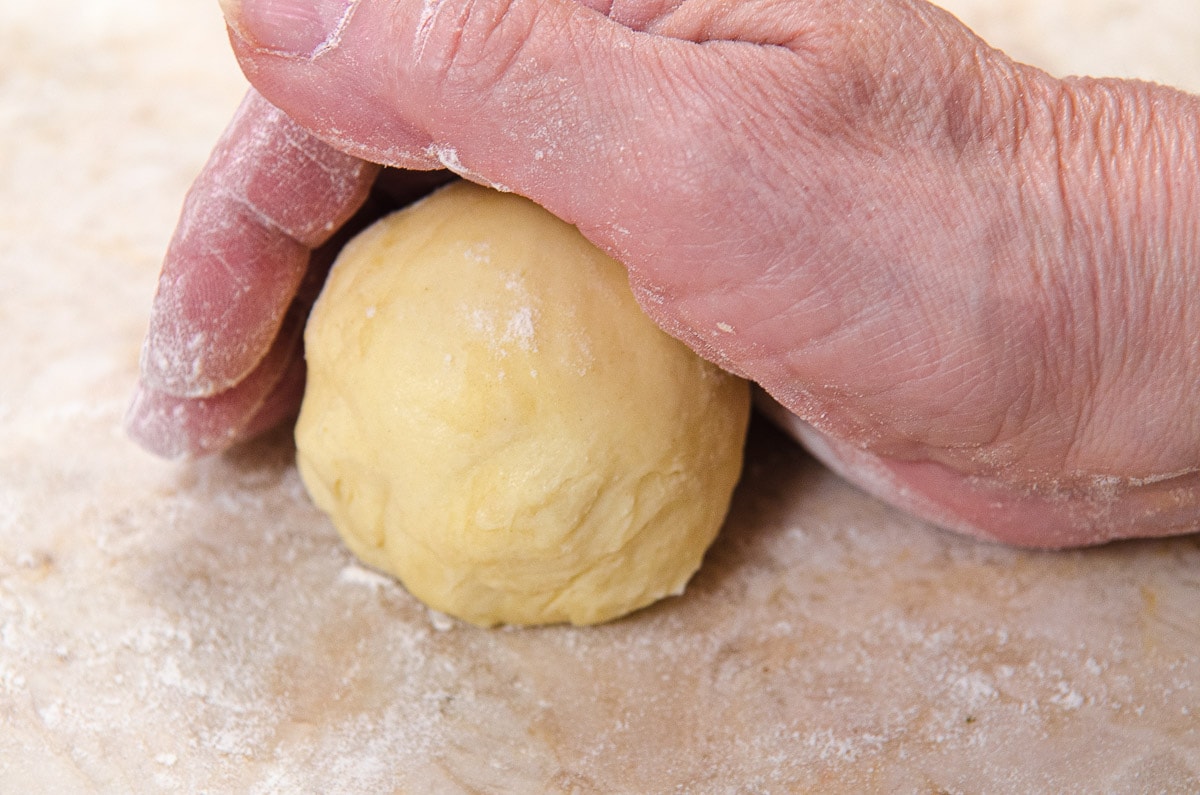
Step 4. Turn the roll over and place on a work surface. Lightly flour the surface if needed. Cup your hand over the top side of the roll.
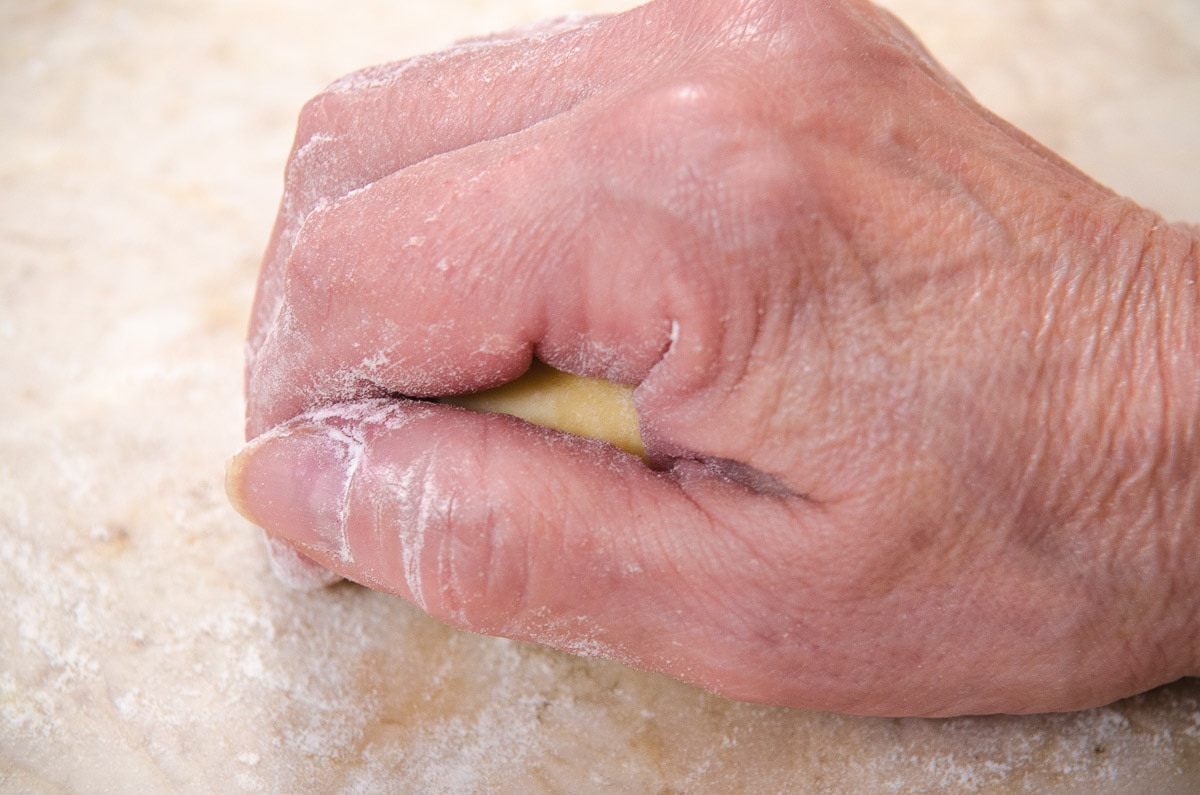
Step 5. Enclose the roll completely under your cupped hand. With light to medium pressure, rotate the roll clockwise or counter clockwise until the roll is a smooth ball.
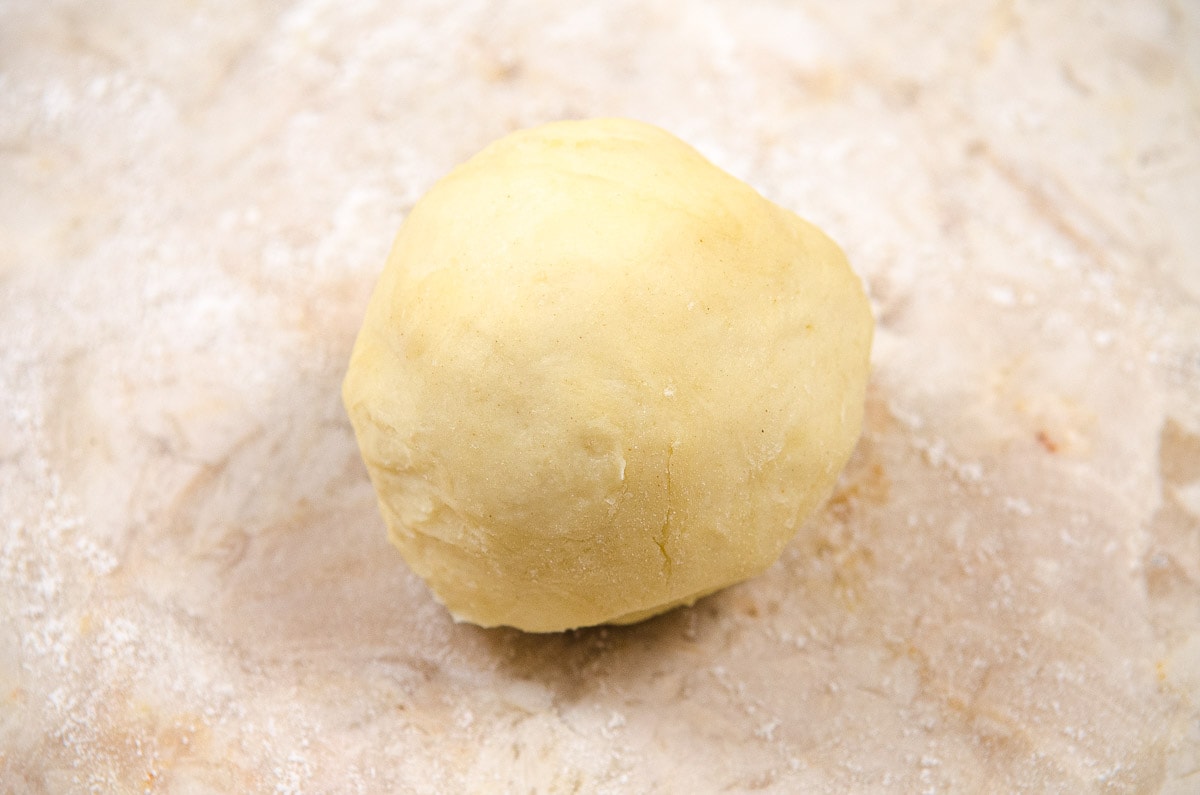
Step 6. Continue to rotate the roll until a smooth ball is formed. Repeat with the next 7 rolls.
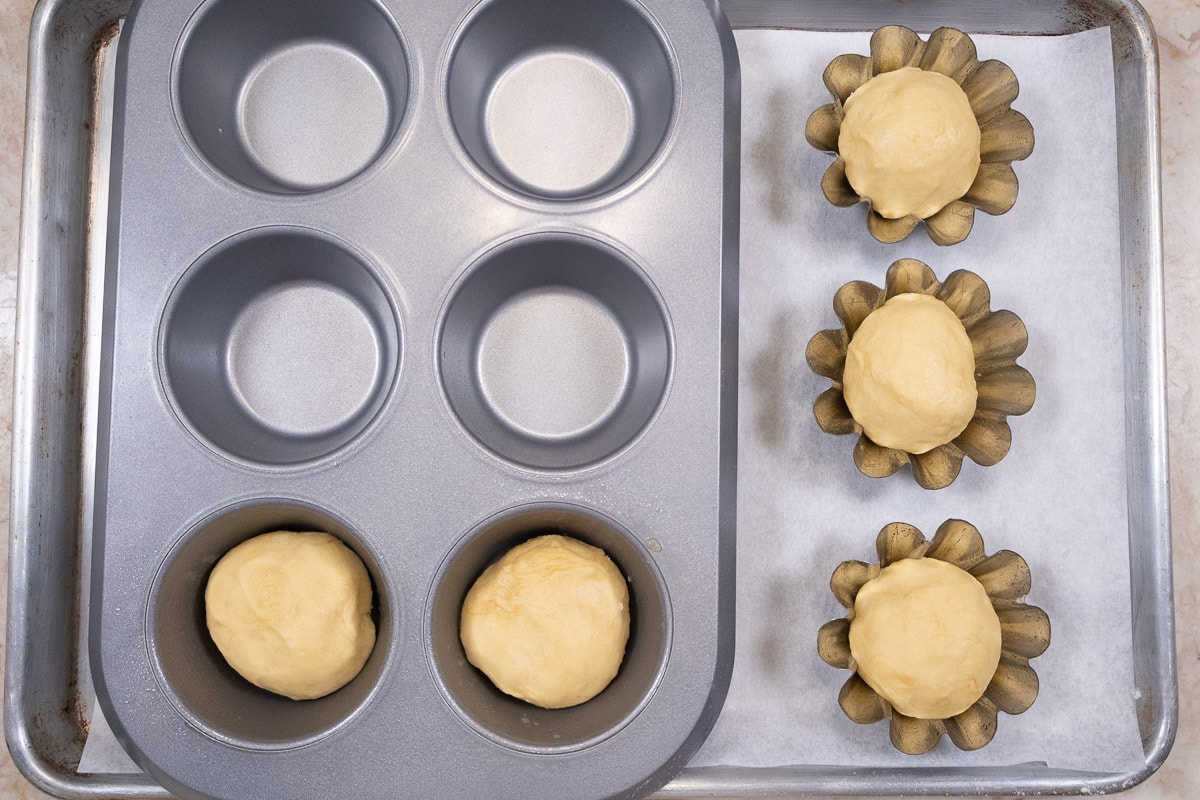
Step 7. Spray the brioche molds or Texas muffin cups with a non-stick baking release. Place the rolls in them, cover with a tea towel and let rise until almost doubled about 2 to 3 hours.
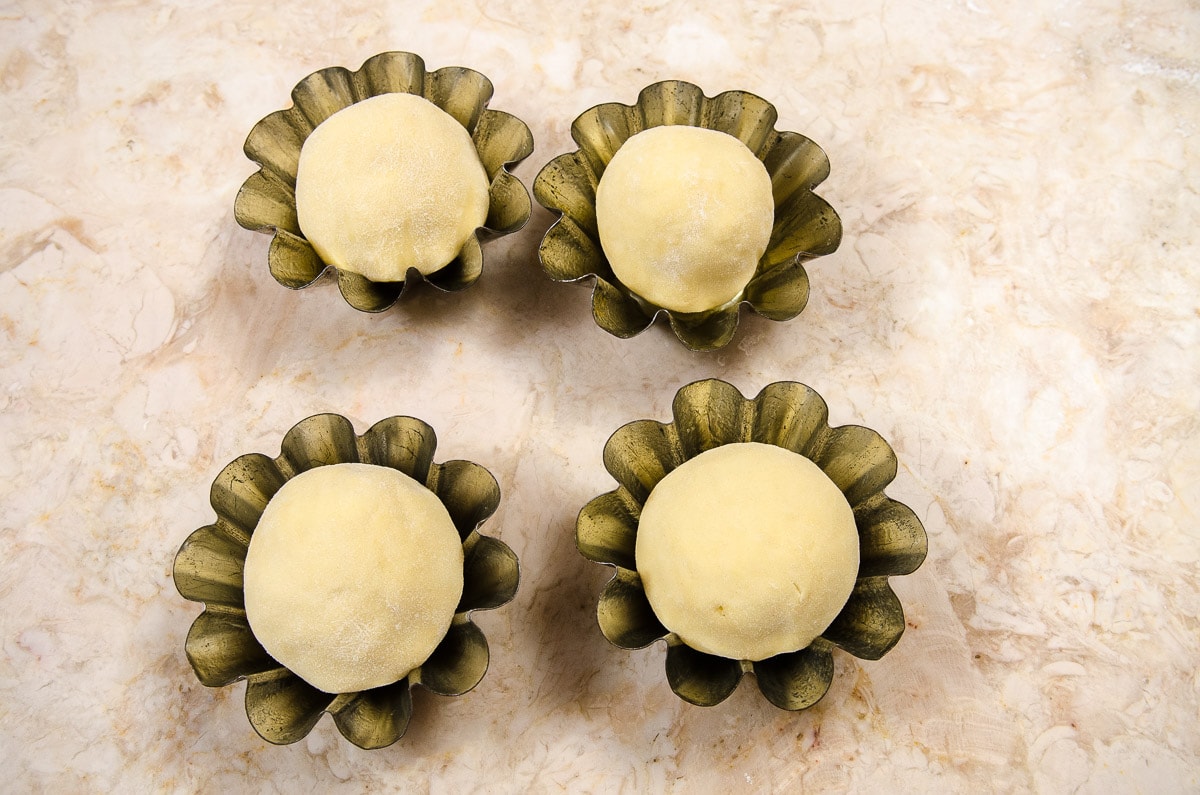
Step 8. Four brioche rolls in traditional brioche molds with fluted side.
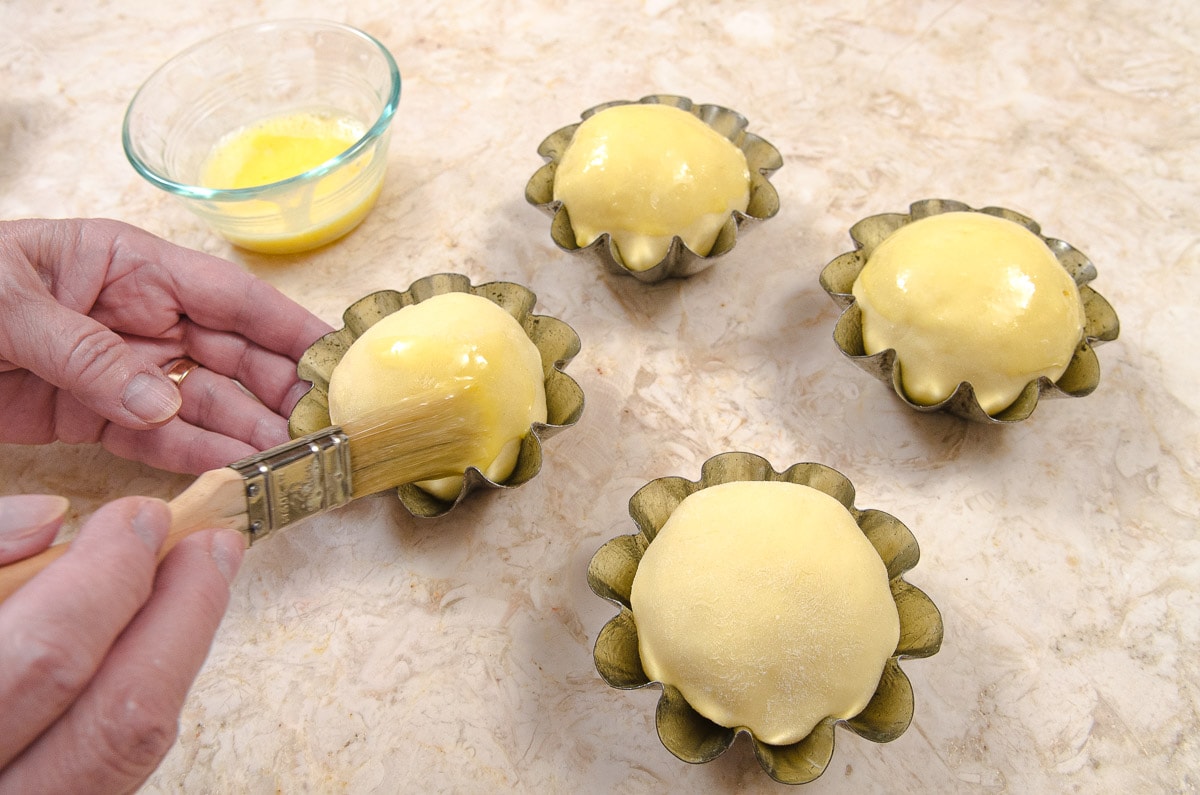
Step 9. Egg wash the rolls to obtain a golden sheen when baked.
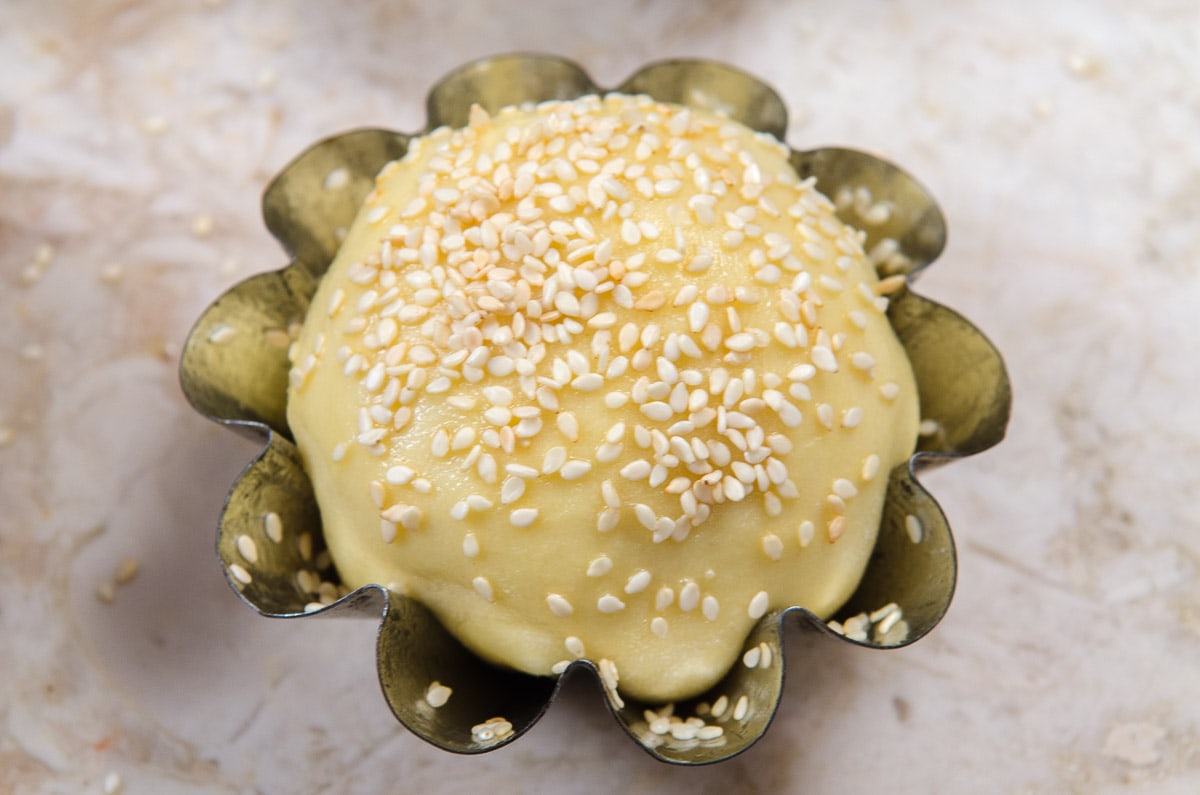
Step 10. Finish the rolls with a sprinkling of sesame seeds.
Variations
Since this is a base recipe, it can be varied endlessly. Here are some that I like.
Cheesy Brioche - Add 6 ounces (170 grams or 1 ½ cups) of any hard cheese such as cheddar, asiago or parmesan to 1 basic recipe of brioche at the end of incorporating the butter.
Lemon Brioche – Depending upon how lemony you want it, add the grated rind of 1 to 2 large lemons (2 to 3 tablespoons) with the flour.
Orange Brioche – Again depending upon how orange you want it, add the grated rind of 1 or 2 medium to large oranges with the flour.
Herbed Brioche – any single herb or combinations of herbs, fresh or dried may be added. 1 to 2 teaspoons for dried or 1 to 2 tablespoons if fresh.
Brioche Sugar Buns – After the final egg wash, sprinkle with Swedish Pearl Sugar . Lemon or orange can be added to the dough as above.
Storage
The beauty of these is they can be made ahead at several points.
After the dough is made and risen, it has to be refrigerated to shape the rolls. It can wait up to three days before shaping.
After baking, the rolls can be well wrapped (individually is best) and frozen up to two months. Unwrap and thaw them at room temperature. Heat at 350°F for about 10 to 15 minutes to give them that "just baked" taste.
Top Tips
- Keep the processor running until the dough, which is more like a batter, is completely mixed. The machine has a tendency to stall if turned off and then turned back on because of the consistency of the dough.
- A sponge is used when the yeast needs to be increased without adding additional dried yeast. This is particularly important for rich doughs that use eggs, butter, sugar, and/or cream. These slow the growth of the yeast so there needs to be a way of speeding it up without imparting a "yeasty" taste. So a bit of flour, water and dried yeast is mixed together. As it sits, the yeast is activated and many, many more yeast cells are formed giving the dough a head start to the rising process.
- It is important to keep the dough cold while shaping it. Because of the large amount of butter, the dough can soften fairly easily. To prevent this, after portioning out the rolls, keep them refrigerated and shape one at a time.
- These take longer to rise after shaping because they are cold and the dough contains a lot of inhibitors.
- If you're wondering where the title "Sixty Second Brioche" comes from, it takes about that much time in the processor. Fast, very fast!
- When applying the egg wash, do not let it run down the side of the pan. Just keep it on the roll.
- The size of the brioche tin I use is 3 ½" wide x 1 ½" deep.
Super Fast and Easy Brioche Rolls
Ingredients
Brioche Rolls
- 1 ½ teaspoon instant yeast
- 2 tablespoons warm water (105 to 115 degrees)
- Pinch of sugar
- 2 ¼ cups bread flour (315 grams or 11 ounces)
- 1 ½ tablespoons sugar
- ½ teaspoon salt
- ¾ cup unsalted butter cold (170 grams or 6 ounces or 1 ½ sticks)
- 3 eggs room temperature
- ¼ cup light cream or half and half room temperature
To Finish
- 1 egg well beaten
- Sesame seeds as needed
Instructions
Making the Brioche
- In a small bowl, place 3 tablespoons of flour from the measured flour, the yeast and a pinch of sugar. Stir in 2 tablespoons of warm water.
- Cover with plastic wrap and allow to double in bulk – about 15 to 20 minutes.
- In a food processor fitted with the steel blade, place the remaining flour, salt and sugar.
- Process 5 seconds to mix.
- Cut the cold butter into small pieces and place in a circle over the dry ingredients.
- Process until the butter is indistinguishable in the mixture, about 20 seconds.
- Scrape down and process 20 seconds more. Place the eggs in a circle over the dry ingredients, pour the cream over the eggs, and add the sponge, also in a circle.
- Process approximately 25 seconds until the ball, which initially forms, breaks down into a creamy, evenly dispersed batter in the processor bowl. Do not stop processing until this batter is formed, as the motor may stall when you try to restart it.
- If it doesn't break down after the allowed time, that's fine. Just continue with the instructions.
- For an easy way to clean the dough off the blade, pulse the processor several times. The centrifugal force will throw most of the dough off. Remove the blade and scoop the remainder out.
- The dough, which is more like a batter, will be very sticky and that is as it should be. Remove it from the processor bowl and place in a bowl sprayed with a non-stick baking release.
- Place plastic wrap directly on top of the batter and cover with a towel. Let rise at room temperature 2 ½ to 3 hours, longer if the room is cool until doubled in bulk. Stir down with a spoon, re-cover with plastic wrap and refrigerate overnight. The dough may or may not rise again in the refrigerator. It doesn’t make a difference. Deflate the dough and use as directed.
- Note: This dough may be held in the refrigerator up to 3 days before serving.
- Yield: About 715 grams or about 25 ounces.
Shaping the Rolls
- Spray 8 brioche tins or Texas muffin cups with a non-stick baking release. Set aside.
- Divide the dough into 8 equal pieces of 85 grams or 3 ounces each. Refrigerate.
- Working with one piece at a time, tuck all the edges underneath. Pinch together tightly.
- Place the roll pinched side down on the work surface. Cup your hand over the roll and rotate it clockwise or counter clockwise to form a smooth, rounded ball. Place in a tin or cup. Repeat with the remaining 7 pieces of dough.
- Cover with a tea towel and let rise until almost doubled in bulk.
- Preheat the oven to 350°F.
- While the oven preheats, beat the egg well. Brush the tops of each roll with the egg. Repeat again just before baking and sprinkle with the sesame seeds.
- Bake for 20 to 25 minutes until deep golden brown.
Notes
- Keep the processor running until the dough, which is more like a batter, is completely mixed. The machine has a tendency to stall if turned off and then turned back on.
- A sponge is used when the yeast needs to be increased without adding additional dried yeast. This is particularly important for rich doughs that use eggs, butter, sugar, and/or cream. These slow the growth of the yeast so there needs to be a way of speeding it up without impartng a "yeasty" taste. So a bit of flour, water and dried yeast is mixed together. As it sits, the yeast is activated and many, many more yeast cells are made.
- It is important to keep the dough cold while shaping it. Because of the large amount of butter, the dough can soften fairly easily. To prevent this, after portioning out the rolls, keep them in the refrigerator except for the one you are shaping.
- These take longer to rise after shaping because they are cold and the dough contains a lot of inhibitors.
- If you're wondering where the title "Sixty Second Brioche" comes from, it take about that much time in the processor. Fast, very fast!
- When applying the egg wash, do not let it run down the side of the pan. Just keep it on the roll so it doesn't stick the roll to the pan while baking.


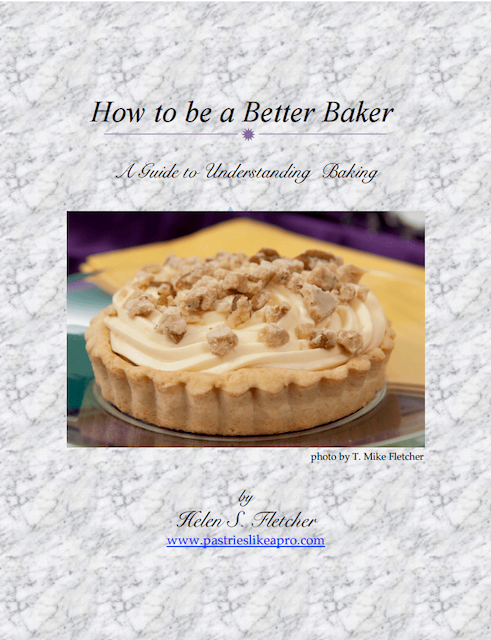
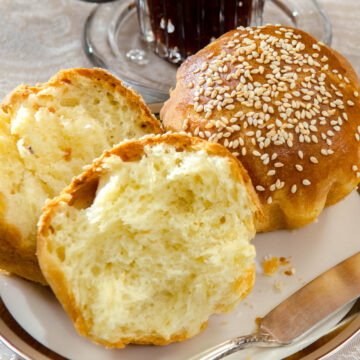

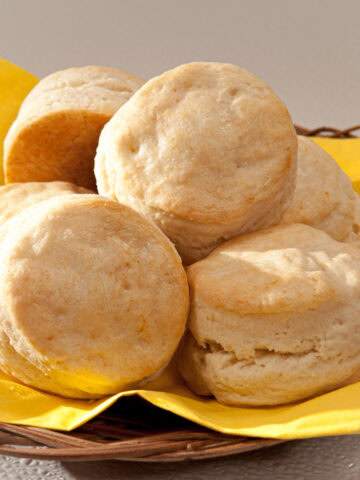
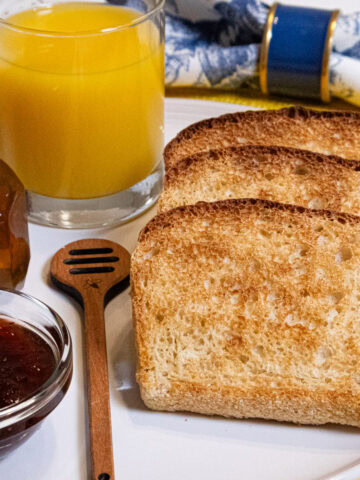

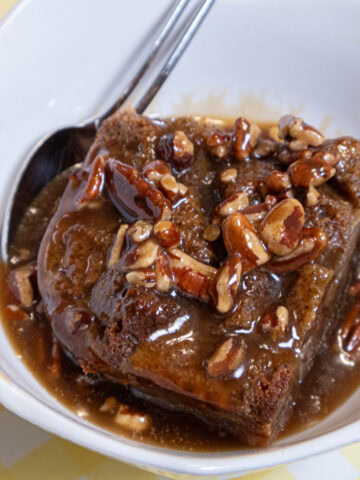
Cathy Thompson says
I am in the first rising phase of this recipe. In the instruction for making the sponge, you specify two tblsp flour in the caption under the photo but in the actual directions you specify three tblsp flour (I added three). The sponge was quite thick but did just about double in bulk. Which is the correct amount? Thank you
Helen S Fletcher says
Hi Cathy, it doesn't really matter if it's two or three but I will correct. The idea is to introduce more yeast into the bulk of the recipe which this does without giving the brioche a yeasty taste. It also streghtens the dough which is heavy in butter and eggs. I use 3 tablespoons and it will be thick.
Carla says
I just pulled the most glorious looking rolls out of the oven. I baked in a casserole dish and will pull apart, as I didn't have brioche pans. I'm curious when you think is the best time to remove these rolls from the pan? Let them cool in the pan or give the a few minutes then cool on a rack?
Helen S Fletcher says
Hi Carla, sorry I couldn't get back to you sooner. We were out of town and out of touch. I usually cool about 10 minutes and release. But in reality they are very cooperatve and will release almost anytime. So glad they came out well for you.
Terry says
Hi Helen,
These look wonderful! Where do I find those individual brioche pans, and what size are they? Could the rolls be placed in the pan and then refrigerated until the next morning?
Thanks for your help and the continual great recipes. They never fail!!!!
Helen S Fletcher says
Hi Terry, I found two sources online. If you look for more, you are looking for a brioche tin that is 3 1/2 inches wide x 1 1/2 inches deep. Here are the two sources: Amazon. These are paper cups and not reusable. The second is William Sonoma.These are permanent. Thanks for the kind words. Happy Holidays to you and hyours.
Bonnie Ward-Knight says
This recipe will make holiday dinners easier, I am so excited to have it. Thank you for all you share, Helen. I hope you and your family are all well.
Helen S Fletcher says
Hi Bonnie, you have lucky guests. We are well and hope you and your family are also.
Elle says
Helen,
I treasure your expertise and wonderful instructions.
Can you tell me about bread flour vs. all-purpose? Even some of my favorite bread recipes use ap. What would happen if I subbed bread flour in them?
Thanks!
Helen S Fletcher says
Hi Elle - The reason bread flour is used is that it allows bread to rise higher than all purpose because it has a higher protein count than all purpose. All purpose can be used but the brioche will just not be quite as high when baked. I routinely recommend bread flour when using yeast but certainly all purpose can be used.
Kim says
Thank you, Helen for sharing your recipes and tips. Your experience as a baker has long been shared with novice and experienced home bakers. This recipe is a bonus being made with a processor. Thanks , again.
Helen S Fletcher says
Hi Kim, Thank you for the kind words. Having worked this recipe out years ago, it's the only way I make it now. Happy Holidays.
Mary says
I like your recipe and I also like that it’s done in the processor.
I shall enjoy making these rolls. Usually I stay away from Brioche ♀️ But will be pleased to try this one.
Thankyou Helen :))
Helen S Fletcher says
Hi Mary, Classic recipes used to recommend beating brioche in a mixer for 20 minutes - enough to burn out some machines. I could never figure out why. When I wrote my first book, The New Pastry Cook, in the '80's a chapter was devoted to Brioche. This is a game changer for sure. Enjoy the rolls and Happy Holidays.